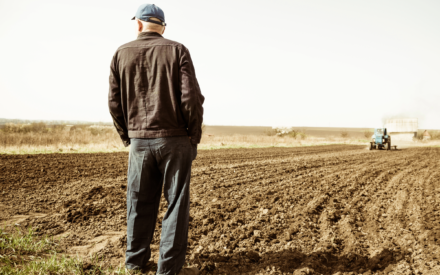What is PTSD and cPTSD?
PTSD was first recognized as a condition that affected some war veterans. Later, it was learned that PTSD can be caused by any number of traumatic events, such as a car accident, natural disaster, near-death experience, or other isolated acts of violence or abuse. PTSD can sometimes be referred to as big ‘T’ trauma.
While it is true that trauma can happen from a single traumatic event, it is also true that trauma can develop from repeated exposure to events that cause a trauma reaction. This is known as cPTSD and is commonly referred to as “complex trauma” or little ‘t’ trauma.
In cPTSD, how the brain processes the stressor is what leads to stress reactions versus the event itself. Stressors can sometimes exceed someone’s ability to cope and can be stored as a trauma in the brain. As such, it doesn’t matter so much what event sent someone into fight, flight, or freeze, but rather the way the brain stored the event in this way. For example, we could both be in a car accident, and I walk away just fine and call it a fender bender. You, on the other hand, walk away terrified of ever getting in a car again as this might be your third “minor” accident.
What are the symptoms of PTSD and cPTSD?
There are some symptoms of cPTSD and PTSD that overlap. One of those symptoms includes the re-experiencing of the traumatic event(s) in the form of intrusive memories, flashbacks, or nightmares. During these episodes, the brain and body can feel like one is stuck in the overwhelming feelings felt during the initial event(s).
Another symptom is severe and persistent problems with emotional regulation. Someone with cPTSD or PTSD can have strongly felt emotions that can include rage, grief, fear, depression, and feeling powerless over their emotions.
Additional symptoms that can be experienced:
- Mistrust of self and others
- Feeling on “high alert”
- Feeling tired or exhausted
- Not wanting to leave the farm/home/your family
- Reduced concentration and memory
- Repeatedly playing the stressors over in your mind
- Feeling detached and withdrawn from those around you
- Disturbed sleep
- Headaches
- Increased heart rate
- Turning to substances
How can PTSD and cPTSD symptoms be managed?
Fortunately, it is not all doom and gloom for a person with cPTSD or PTSD. It may be helpful to know a person can start their journey to healing by taking some key steps.
In order to manage symptoms of cPTSD or PTSD, one must work on feeling emotionally safe within themselves. Emotional safety includes being able to identify feelings and letting oneself feel their feelings. Most people after experiencing trauma(s) spend weeks, months, or even years running from their feelings, or try to cover them up with substances or keep themselves very busy.
Many people with cPTSD or PTSD struggle to understand why they behave the way they do. Often, people don’t recognize their symptoms as symptoms and don’t relate them to the events they have experienced or witnessed. This can lead to feeling intense shame. The first step, then, is self-awareness, connecting the dots, and determining your triggers to help predict and prepare for the future.
What are triggers of PTSD and cPTSD?
A trigger is something that happens to a person either internally or externally that activates the system to respond. For people with cPTSD or PTSD, this response may be like triggering the emotional alarm system (fight, flight, or freeze). Triggers can include people, places, things, thoughts, emotions, and situations/events.
Some examples of triggers:
- Seeing someone who resembles an abuser
- Experiencing the anniversary of the traumatic event(s)
- Feeling lonely/disconnected
- Making a mistake
- Asking for help
- Feeling unheard
- Being talked down to
- Physical pain
Once self-awareness has been started (I say “started” because it is an ongoing process), a person moves on to learning how to “handle” what comes up in their life. In the therapy world, we use the term “coping skills.” Coping skills are actions or thoughts used to reduce or remove the reaction to an unpleasant situation or trigger. These actions and thoughts initially take some focus and energy, and over time, they generally become second nature and therefore require less focus and energy.
It is highly recommended to create a coping “toolkit” to proactively manage future triggers. It is, unfortunately, almost impossible to use your thinking brain while triggered (remember, it is going into fight, flight, or freeze), so a person would be more likely to use the skills if they are readily available.
How do I build my coping skills toolkit?
There are a number of coping skills that can be used when triggered. Here is a list of several:
Grounding (calming your mind and body down)
- Take deep, slow breaths from your belly (vs. chest)
- Use your senses to see, hear, touch, smell, and taste what is around you
- Use cold water or ice on your skin
- Run your hands over a rough surface, like a tree trunk
- Say positive affirmations out loud (“I am stronger than this trigger,” “I am safe now,” “My brain is looking in the past, not the here and now,” “I have choices to cope”)
Distracting (diverting your attention, for the current moment)
- Listening to music/podcast/book
- Exercise
- Take a walk
- Text a friend/family/loved one
- Check your social media
- Watch tv/movie
Self-Soothing (provide yourself comfort)
- Make a cup of tea/hot chocolate
- Take a bath/shower
- Meditate or pray
Final ideas to help a person better understand and manage their cPTSD or PTSD include:
- Write about your triggers and the emotions behind them
- Address the feelings/events behind your trigger (with therapist, friends, loved ones)
- Share your triggers in support groups
While cPTSD and PTSD can be confusing to understand, there is hope! If you feel like you or a loved one has cPTSD or PTSD and would like to talk to a therapist, please take the first step and make the call! It is possible to reclaim your power.


 Counselors have a place in agriculture
Counselors have a place in agriculture Five tools to address stress
Five tools to address stress Benefits of Sleep for Mental and Physical Wellbeing
Benefits of Sleep for Mental and Physical Wellbeing February is Heart Health Month — Achieve a Happy Heart!
February is Heart Health Month — Achieve a Happy Heart!


